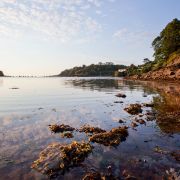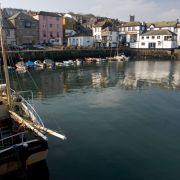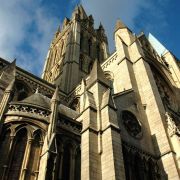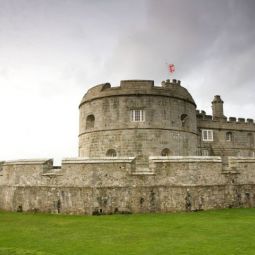The Fal estuary, where two river valleys meet the ocean, culminates in an impressive deep-water harbour that has long offered sailors much-needed shelter from the prevailing westerly winds. A landscape of wooded creeks and inlets provide a picturesque setting for the many tiny villages and isolated churches that help lend this area its unique and delightful character.
This natural harbour was deemed important enough by Henry VIII to warrant the building of two defensive castles, Pendennis, just outside Falmouth, which was home to a secret underground base during world war two, and St Mawes, on the relatively remote and little-visited Roseland Peninsula.
St Mawes can be reached by foot ferries from Falmouth during the summer months and is perhaps the most well-known of the attractive but understated Roseland villages. A characterful coastal hub which reeks of tradition St Mawes is popular among the yachting community and, as well as its 16th century castle, boasts a number of shops, galleries and restaurants hidden among its steep, cobbled streets. From St Mawes a foot ferry can also be taken to St Anthony Head, where the landscape is wilder and the St Anthony lighthouse, built in 1835, still works to warn ships of the infamous Manacles Reef.
The River Fal rises near Truro, Cornwall’s administrative centre and home to her only cathedral, an impressive neo-gothic affair which dominates the cobbled, pedestrianised city-centre. Truro boasts a good range of shops and restaurants and the newly regenerated Lemon Quay, a continental-style cobbled square lined with café terraces, is home to bustling farmer’s markets and local craft and produce stalls.
From Garras Wharf regular boats leave for Falmouth, a journey which lasts about an hour and offers a pleasant alternative to driving. Here is a chance to take in the delightful estuarine scenery, including coastal wetlands important for animal and plant life. Birds such as curlews, oystercatchers and herons are common here and the beautifully-tended sub-tropical gardens of large country estates such as Trelissick and Trengothan can be glimpsed through the thick, lush woodlands that come right down to the water’s edge.
As you approach Falmouth you will see working boats dredging for oysters under sail alone as they have done for four centuries.
Falmouth has a strong maritime tradition, dating from it’s heyday in the 17th and 18th centuries when the fast Post Office Packet sailing boats carried mail and expensive cargo to and from places as far afield as the East Indies and Spain.
Approaching Falmouth by car one first stumbles upon Penryn, a more ancient and less famous (also less touristy) port that features in the Domesday Book. Penryn is home to the newly-built University College of Falmouth, an expansion of the well-established Falmouth College of Arts.
Still an important ship repair centre Falmouth is now a haven for yachtsmen and a thriving university town, demonstrated by the vibrant bars, cafes, shops, cinemas and art galleries clustered along her bustling streets.
Show more...














